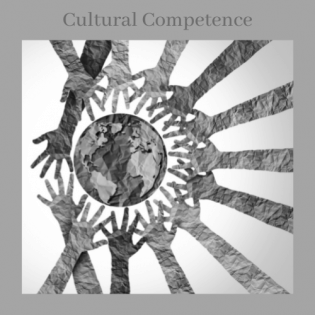Anti-Racism
This activity explores the difference between anti-racism, which includes active steps away from injustice, and non-racism, which is a passive description.
The learner will be able to distinguish anti-racism from nonracism.
Chart paper or poster board, markers, pens, magazine pages, glue (for presentation)
Study the differences between nonracism and anti-racism. Youth will have questions about the difference between these concepts, so a personal understanding of them will help support the young people.
- Racism - using race to create and support beliefs and systems that discriminate against some people and give privileges to other people. Racism is maintained by individuals, groups, and institutions.
- Nonracist - not having feelings of hurtful prejudice or discrimination based on race
- Anti-racism - actively noticing, questioning, and opposing racism by taking action to address and speak out about racism through your words and actions.
Note: The source of the definitions above is from PBS: Talking to Young Children about Race and Racism - A Discussion Guide
How can we learn more about anti-racism? Families may choose to read books like This Book is Anti-racist by Tiffany Jewell and Stamped: Racism, Antiracism, and You by Jason Reynolds and Ibram X. Kendi.
Do you think it is okay to notice and talk about differences in people's skin color? Why?
What is the difference between anti-racism and not being racist? What makes it harder to be anti-racist as a young person? How does anti-racism relate to what you’ve learned about inclusion?
PBS. Talking to Young Children about Race and Racism - A Discussion Guide
Instructions
Anticipatory Set:
Recall the previous lesson about race and ethnicity. Invite any questions they’ve developed or things they’ve noticed since that time.
Introduce the lesson vocabulary. Spend time highlighting the following:
- Racism is not just hurtful personal prejudice, but also the use of power to uphold unfair systems.
- Being nonracist is passive and has to do with how you feel. Being anti-racist is active and involves taking steps against racist treatment and systems.
Working in groups of 2-3, they define and give an example of one of three concepts: racism, nonracism or anti-racism. Instruct each group to review and explain their assigned concept in their own words, including the definition and an example. There may be more than one group looking up the same concept.
Have the small groups represent their concept and share it with the large group using the poster-making materials provided. They may choose to illustrate or use video, poetry, or other creative means.
Invite the group to discuss what steps they can take to be anti-racist right now. Examples might include:
- doing a bookshelf audit to ensure there are non-white characters and authors reflected
- advocating for celebrations and holidays of non-dominant cultures
- interrupting a racist joke or insult and saying “that’s not okay”
- requesting multicultural sets of crayons and markers for the class or group
Encourage the group to be upstanders, which is someone who stands up for others to make the world better. Upstanding isn’t always easy but it is right.
Discuss what things could make it challenging to be anti-racist. Examples might include:
- Not being heard by adults
- Feeling awkward or shy
- Worrying about losing friends
Giving back to the community: March 21 is the annual date for the International Day for the Elimination of Racial Discrimination. Brainstorm with the group ways to observe this day in their school, organization or community.
